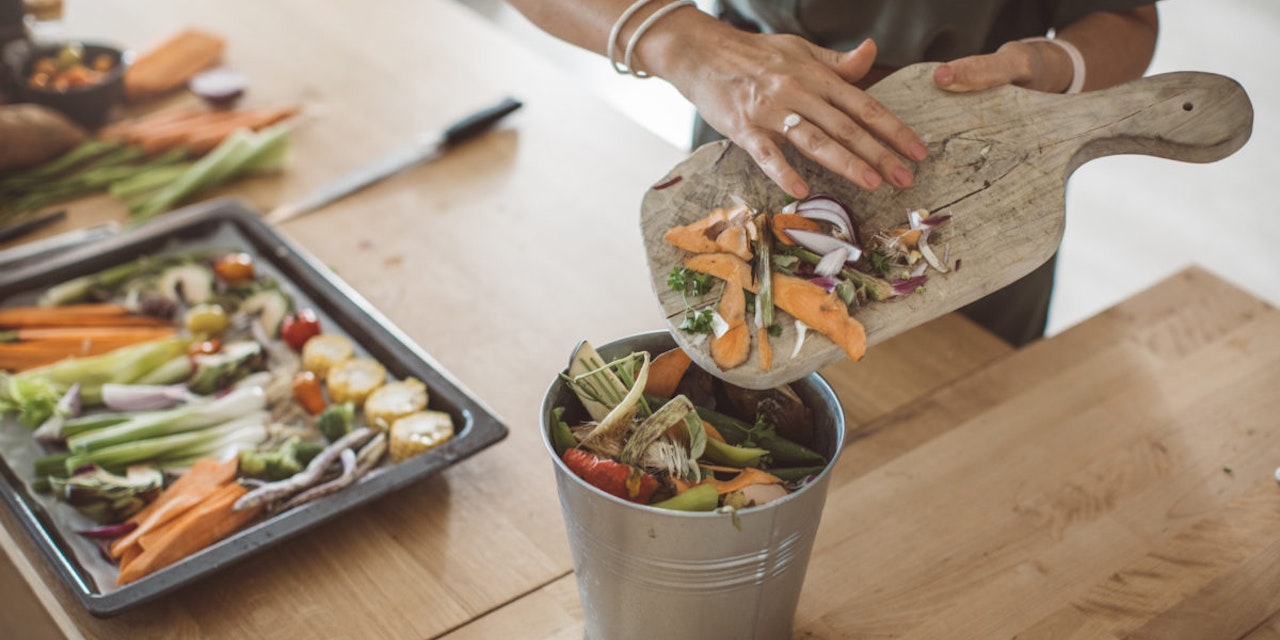Zero-Waste Cooking: Tips and Tricks for a Sustainable Kitchen
From grocery shopping to meal preparation and storage, adopting zero-waste cooking practices can promote sustainability and help future generations.
- Published: 3/14/2024
- Categories:
- 4 min. read

- Published: 3/14/2024
- Categories:
- 4 min. read
From grocery shopping to meal preparation and storage, adopting zero-waste cooking practices can promote sustainability and help future generations. This article delves into various tips and tricks for creating a more sustainable kitchen by giving you ideas on what to do to decrease the collective carbon footprint and get creative with your extra ingredients.
Tips and tricks for a sustainable kitchen
-
Mindful meal planning
The journey towards zero waste cooking begins with thoughtful meal planning. Take stock of the ingredients already available in your pantry and fridge before heading to the grocery store. Plan meals that use your perishable items first, to minimize the risk of food spoilage. Also consider batch cooking, or making larger portions that can be divided and stored for later use, in order to reduce the need for frequent cooking sessions.
-
Embrace imperfect produce
Just because a piece of produce isn’t perfect-looking, doesn’t mean it’s less nutritious or flavorful as their pristine counterparts. The “ugly” produce is typically discarded due to aesthetic standards, contributing to unnecessary waste. In fact, produce from a local farmers market tends to spend more time on the tree or vine, providing better taste and more nutrients (2). Choosing imperfect produce also supports farmers by utilizing their entire harvest.
-
Use every part of the ingredient
Food that is produced and not eaten contributes to about 10% of global greenhouse gasses (1). Rather than letting food go to waste, get creative in the kitchen by using every part of the ingredient whenever possible. It will also help you save money.
Vegetable scraps like carrot tops, celery leaves, and broccoli stems can be repurposed into flavorful stocks, sauces, or pestos. Freeze fruit and use it for a healthy smoothie. Similarly, leftover meat bones can be simmered to create hearty broths.
-
Composting and recycling
Establishing a compost system can help prevent organic waste from reaching landfills. Vegetable peels, eggshells, and coffee grounds can all be composted to create nutrient-rich soil for gardening. Additionally, prioritize recycling whenever possible by choosing products with minimal packaging or packaging made from recyclable materials.
-
Shop in bulk
Reduce packaging waste by shopping in bulk whenever possible. Use your own containers to refill with pantry staples like grains, legumes, nuts, and spices. Many grocery stores now offer bulk sections where you can purchase items without the excess packaging typically associated with pre-packaged goods.
Zero-waste cooking tips
Lifesum’s chef and sustainability enthusiast, Julia, also has some excellent tips and tricks for a more sustainable kitchen. Some highlights include:
- Look inside your fridge for inspiration, and what’s about to spoil, before you head to the store.
- Make vegetables and plant-based proteins the star of the meal.
- Keep non perishable staple items on hand such as frozen green beans, crushed tomatoes, and lentils.
- Keep it simple and don’t try to cook a new dish every day.
- Try healthy and sustainable meals with Lifesum's Climatarian Diet.
Sustainable recipe: Roasted beans and vegetables
Here’s an environmentally conscious meal to start your zero-waste cooking and sustainable kitchen path. Already have some vegetables at home? Simply swap them out for the ones in this recipe.
INGREDIENTS (4 servings)
- 900 g sweet potatoes
- 1 red onion
- 660 g cooked white beans
- 2 tbsp canola oil
- 200 g chopped green kale
- 120 ml plant based yogurt 2% fat
- 2 tbsp dijon mustard
- 1 tsp salt
- 1 tsp ground black pepper
- 1 tsp thyme
- 1 tsp garlic powder
- 30 g chopped parsley
INSTRUCTIONS
- Set the oven to 200°C.
- Cut the sweet potatoes and onion into cubes.
- Rinse the beans.
- Add the potatoes on a sheet pan, drizzle oil and season with salt, pepper, thyme, and garlic powder. Roast in the oven for about 15 minutes.
- Add the red onion and beans, and roast for another 5 minutes.
- Add the green kale to the warm veggies and mix around.
- Mix the yogurt and mustard together and drizzle the dressing over the vegetables before serving. Garnish with some fresh parsley.
2 references (hide)
All of the content and media on Lifesum is created and published for information purposes only. It is not intended to be used as a substitute for medical advice or treatment. Users should always consult with a doctor or other health care professional for medical advice. If you have or think you are at risk of developing an eating disorder, do not use the Lifesum app and seek immediate medical help.